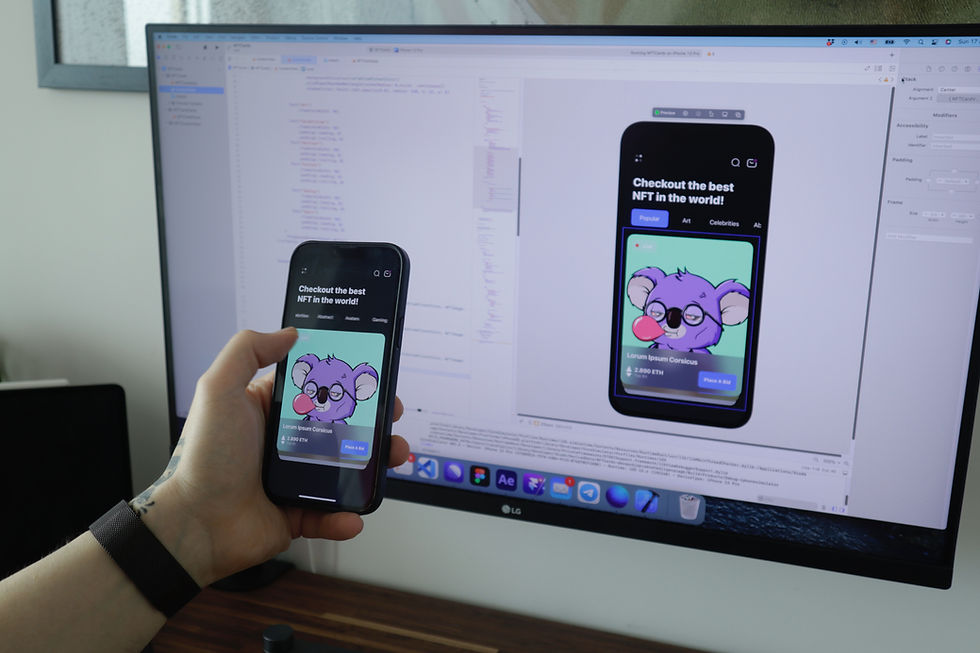Performance testing of iOS Apps
- Mar 31, 2023
- 3 min read

Performance testing is a critical aspect of iOS app development. It ensures that the app performs optimally, providing a seamless user experience. With millions of apps available in the App Store, it is imperative that an iOS app must perform well to succeed.
In this blog, we will explore what iOS app performance testing is, the best practices to follow, and the tools available.
What is iOS App Performance Testing?
iOS app performance testing is the process of testing an application's performance and behavior on iOS devices. The testing process includes evaluating the app's response time, speed, stability, scalability, and resource utilization. The goal of iOS app performance testing is to identify any performance issues before the app is released to the public.
What to test?
Memory usage including memory leaks, abnormal memory usage, memory spikes.
Battery drain
CPU usage
Network call performance issues, Error status codes in responses, delayed calls, duplicate calls.
App Hang
Screen responsiveness
User flow and logic
Steps in iOS App Performance Testing
Define Test Objectives - The first step in iOS app performance testing is to define the test objectives. This includes identifying the target audience, user scenarios, and performance goals.
Identify Performance Metrics - The next step is to identify the performance metrics that need to be tested. This includes response time, speed, stability, scalability, and resource utilization.
Create Test Environment - The test environment should be created to simulate real-life scenarios. This includes configuring the hardware and software components, network conditions, and device settings.
Develop Test Plan - A detailed test plan should be developed, outlining the test scenarios, test cases, and expected results.
Execute Test Plan - The test plan should be executed as per the defined scenarios, and the app's performance should be evaluated under different conditions.
Analyze Test Results - The test results should be analyzed to identify performance issues and bottlenecks.
Optimize App Performance - Based on the test results, the app's performance should be optimized to ensure that it meets the performance goals and objectives.
Tools for iOS App Performance Testing
Xcode Instruments - Xcode Instruments is a powerful tool that can be used for iOS app performance testing. It provides a wide range of profiling and debugging tools that can help identify and resolve performance issues.
Charles Proxy - Charles Proxy is a tool that can be used to monitor network traffic, including HTTP and SSL traffic. It can be used to test the app's performance under different network conditions.
XCTest - XCTest is an automated testing framework provided by Apple for testing iOS apps. It can be used to create automated performance tests.
Firebase Test Lab - Firebase Test Lab is a cloud-based testing platform that provides a wide range of testing capabilities, including performance testing.
BrowserStack - Cloud based testing platform with a range of features to identify and debug issues while testing.
Finotes - SaaS platform that reports performance issues and bugs in iOS apps in real time. It detects Memory issues, screen responsiveness, crashes, rendering issues, network call issues over HTTP and HTTPS and much more in development, testing and live phases of the app.
Best Practices for iOS App Performance Testing
Test Early and Often - iOS app performance testing should be an integral part of the development process, and testing should be done early and often.
Use Real Devices - Testing should be done on real devices to simulate real-life scenarios accurately.
Define Realistic Test Scenarios - Test scenarios should be defined based on real-life scenarios to ensure that the app's performance is tested under realistic conditions.
Use Automated Testing - Automated testing should be used to reduce the testing time and improve accuracy.
Monitor App Performance - App performance should be monitored continuously to identify any performance issues and bottlenecks.
Collaborate with Developers - Collaboration between testers and developers can help identify and resolve performance issues early in the development process.
Conclusion
iOS app performance testing ensures that the app performs optimally, providing a seamless user experience. By following best practices and using the right tools, iOS app developers can identify and resolve performance issues early in the development process, resulting in a high-quality app that meets the user's expectations. It is essential to test the app's performance under different conditions to ensure that it performs well under all circumstances. Therefore, app performance testing should be an integral part of the iOS app development process.



Komentarze